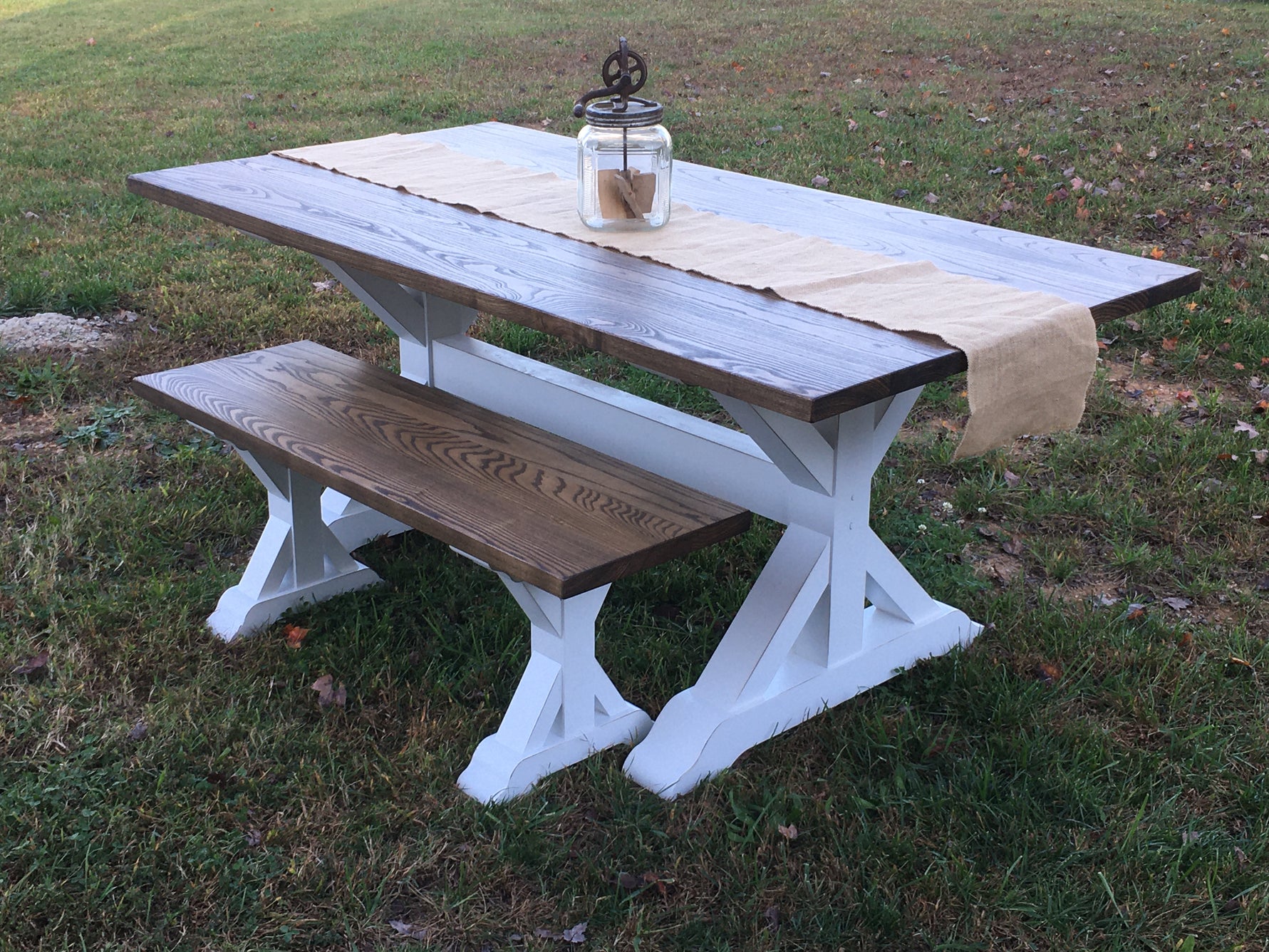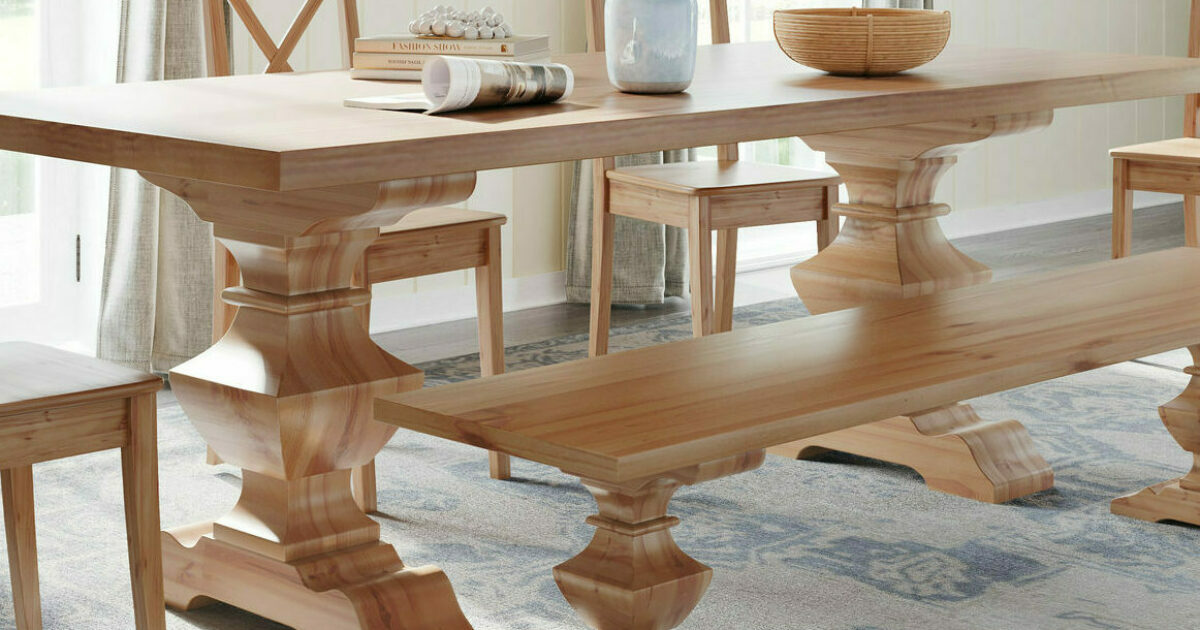Include Strength and Charm Using Solid Dining Table Legs Wood Parts
Include Strength and Charm Using Solid Dining Table Legs Wood Parts
Blog Article
Exploring the Various Types of Table Legs Timber for Your Dining Area
The choice of dining table legs wood can greatly affect both the aesthetic and useful qualities of your eating room. Strong wood options, such as oak and walnut, offer a traditional appearance with unequaled resilience, while crafted wood alternatives provide ingenious layouts that resemble the richness of all-natural grains.
Strong Timber Options

Unlike crafted materials, solid timber is less prone to warping and damages over time when correctly preserved. Each item of solid wood is one-of-a-kind, showcasing individual attributes that include to the appeal and character of the eating table.
In addition, solid timber can be ended up in many means, ranging from all-natural oils to tarnished finishes, permitting house owners to customize their furnishings to match their style. In summary, selecting strong wood for eating table legs not just makes sure architectural stability yet additionally enhances the aesthetic appeal of the dining area, making it a worthwhile investment for any kind of home.
Engineered Wood Alternatives

Plywood, created from numerous layers of wood veneer, is especially solid and steady, making it an exceptional option for dining table legs. Its split structure enables it to withstand modifications in humidity and temperature level far better than conventional strong wood. MDF, on the various other hand, uses a smooth surface for painting or veneering, allowing developers to accomplish a sleek appearance while preserving architectural integrity.
Particleboard, typically made use of in economical choices, gives respectable toughness and is lightweight, making it simpler to manage. However, it may not be as durable as plywood or MDF. It is crucial to take into consideration the intended usage and desired aesthetic when selecting engineered timber choices. These products not just enhance the capability of dining spaces however likewise enable greater layout adaptability, making certain that typical and modern designs can coexist sympathetically.
Reclaimed Timber Includes
Reclaimed wood uses an unique mix of sustainability and personality, making it a significantly prominent option for eating table legs. Sourced from old barns, manufacturing facilities, and other frameworks, recovered timber symbolizes a history that brand-new products simply can not duplicate. Each piece brings its very own tale, noted by distinct flaws, knots, and differing grain patterns, which contribute to a table's one-of-a-kind visual allure.
Along with its visual charm, reclaimed wood is an ecologically friendly option. By repurposing formerly made use of materials, it decreases the need for brand-new lumber, hence aiding to minimize and preserve forests waste. This straightens with an expanding consumer preference for sustainable techniques in home furnishings.
Additionally, recovered timber is typically a lot more sturdy than newly collected timber because of its age. The natural drying out process that redeemed timber undertakes lead to a denser and more powerful product, why not check here making it less at risk to bending and splitting. This enhances the longevity of dining tables, permitting them to endure the roughness of daily use.
Softwood vs. Wood
When choosing dining table legs, comprehending the distinctions between softwood and wood is critical for attaining both functional and aesthetic objectives. They commonly display a more rustic appearance, making them ideal for country-style or informal eating spaces.
On the other hand, woods, sourced from deciduous trees like oak, cherry, and maple, are renowned for their density, strength, and sturdiness. The detailed grain patterns and rich tones of woods give a classic and innovative appeal, making them ideal for formal dining setups. While woods often tend to be a lot more expensive and larger, their durability versus damage typically validates the financial investment.
Ultimately, the choice in between softwood and wood for eating table legs should line up with your layout vision, usage needs, and budget, guaranteeing that your eating area shows your individual design while staying useful over time.

Therapies and surfaces
The visual allure and longevity of table legs can be considerably improved through numerous finishes and therapies. These procedures not only secure the wood from damages however additionally boost its look, enabling it to complement diverse indoor styles.
One common treatment is discoloring, which passes through the wood and enhances its all-natural grain while adding shade. Discolorations offer an abundant, sophisticated look, enabling home owners to match their furniture with existing decor. On the other hand, clear Full Article finishes such as polyurethane or varnish create a safety layer without altering the wood's initial tone, ensuring sturdiness versus damage.
Additionally, natural oils, like tung or go to my blog linseed oil, nurture the wood and supply a subtle luster, all while being environment-friendly. These oils allow the surface area to breathe, preventing wetness build-up and prospective bending.
For those looking for a rustic appeal, weather-beaten or distressed coatings can be applied to produce an aged look, adding personality to the item. Inevitably, the choice of coatings and treatments depends on individual choice, desired aesthetics, and the details timber type, making it necessary to take into consideration these elements when choosing eating table legs for your room.
Conclusion
In conclusion, the selection of table leg materials considerably affects both the practical and aesthetic aspects of a dining space. Solid woods, crafted options, and redeemed alternatives each deal unique benefits, providing to various preferences and demands. Understanding the differences in between woods and softwoods, along with ideal surfaces and treatments, enables notified decision-making. Ultimately, the option of timber type should straighten with preferred design, sturdiness, and ecological considerations, improving the total dining experience.
The selection of dining table legs wood can greatly impact both the aesthetic and practical qualities of your dining room - Dining Table Legs Wood. Solid wood alternatives, such as oak and walnut, provide a traditional look with unequaled sturdiness, while crafted timber choices provide cutting-edge layouts that resemble the splendor of natural grains. Strong timber provides a timeless top quality that can boost the overall layout of a dining space. Each piece of strong wood is one-of-a-kind, showcasing specific characteristics that add to the beauty and character of the dining table
Moreover, redeemed timber is usually a lot more long lasting than newly harvested timber due to its age.
Report this page